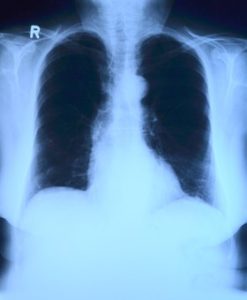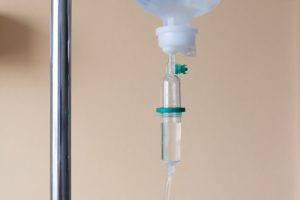The following review was originally posted by Dr. Marcelin to the September 2018 SHEA Journal Club and featured on Medscape’s SHEA Expert Commentary earlier this month.
Use of empiric antimicrobial treatment in acute care settings is often the result of the “diagnosis momentum” heuristic, wherein the antibiotics started in one location for “sepsis” are continued for several additional days after transfer to a second location. Vancomycin remains one of the most commonly prescribed inpatient antibiotics, despite a decline in prevalence of invasive MRSA infections. The authors of the first article “Rate of positive cultures necessitating definitive treatment in patients receiving empiric vancomycin therapy” compared the rate of actual positive culture requiring vancomycin to the rate of vancomycin use in a single-center retrospective observational study. The majority of these infections were SSTIs, bacteremia and pneumonia.
Concern for MRSA is likely the driver of overuse of vancomycin, yet this organism was confirmed in only 8.4% of the positive cultures. Over the three-month period studied, only 11% of 1662 patients on vancomycin had a positive culture necessitating vancomycin use as definitive therapy. This means that up to 90% of patients on empiric vancomycin can likely be safely de-escalated, especially after 48 hrs. of negative cultures. However, convincing prescribers to discontinue presents a separate challenge for Antimicrobial Stewardship Programs (ASP).
 In the second article, “Microbiology Comment Nudge Improves Pneumonia Prescribing”, the authors capitalized on the fact that perhaps most decisions to start empiric vancomycin/piperacillin-tazobactam in setting of pneumonia occur in the context of concern for unidentified MRSA or Pseudomonas aeruginosa. Even with negative cultures, are prescribers continuing these antibiotics because of a fear that these bacteria are lurking in the cultures, but missed by the microbiology lab? In active stewardship education, we can tell people “the likelihood that MRSA or pseudomonas is going to be present in a person without specific risk factors is low”. In a complex patient care scenario however, prescribers can talk themselves into the possibility of these bacteria being present even when it highly unlikely. What if the micro lab could say unequivocally that these organisms were absent; would that change practice?
In the second article, “Microbiology Comment Nudge Improves Pneumonia Prescribing”, the authors capitalized on the fact that perhaps most decisions to start empiric vancomycin/piperacillin-tazobactam in setting of pneumonia occur in the context of concern for unidentified MRSA or Pseudomonas aeruginosa. Even with negative cultures, are prescribers continuing these antibiotics because of a fear that these bacteria are lurking in the cultures, but missed by the microbiology lab? In active stewardship education, we can tell people “the likelihood that MRSA or pseudomonas is going to be present in a person without specific risk factors is low”. In a complex patient care scenario however, prescribers can talk themselves into the possibility of these bacteria being present even when it highly unlikely. What if the micro lab could say unequivocally that these organisms were absent; would that change practice?
In this quasi-experimental study conducted within a 4-hospital system in Detroit, the microbiology lab cultured respiratory specimens of individuals being treated for pneumonia. The lab made a simple modification to their reporting system for normal “commensal respiratory flora” (which included growth of Neisseria, Corynebacterium and Streptococcus, with no dominant growth of any single organism). The lab added the statement: “No S. aureus/MRSA [methicillin-resistant Staphylococcus aureus] or P.[Pseudomonas] aeruginosa” to the report, and the ASP provided a brief education to prescribers.

After this behavioral nudge was implemented, prescribers were 34% (p<0.01) and 5.5-fold more likely to de-escalate antibiotics than when the report only stated “commensal respiratory flora”. Additionally, with fewer vancomycin/piperacillin-tazobactam combination days of therapy (DOT), they noted a 17% reduction in acute kidney injury (p<0.03) even after adjusting for severity of illness with APACHE II or Charlson comorbidity index scores. The DOT of MRSA and antipseudomonal therapy was reduced from 7 to 5 days (P<0.01). The authors do not state how long their lab took to finalize cultures, but assuming at least a preliminary result of the “commensal respiratory flora” comment nudge in 48 hrs. even the intervention arm had room for earlier de-escalation, with a median empiric DOT of 5 days. Multidrug-resistant organisms (MDROs) were not generally prevalent in either group, however there was a significant difference in development of subsequent MDROs after the culture result nudge (8% vs 1%, p=0.035). Despite these significant stewardship outcomes, however, no effect on mortality, development of Clostridium difficile infection, or change in length of ICU/hospital stay was observed.
Behavioral nudges use positive reinforcement and indirect messaging to influence decision-making, and exist in many areas of our clinical environment already. Many microbiology labs already include resistance markers in the rapid diagnostic test results, which serve to passively guide prescribers to appropriate antibiotic choices. As ASPs aim to collaborate with prescribers to change behaviors, these behavioral nudges can be a useful low-effort/high-yield tool to further assist with antibiotic de-escalation, even in critically ill patients.
References:
Dustin Waters and Joshua Caraccio Rate of positive cultures necessitating definitive treatment in patients receiving empiric vancomycin therapy. Infection Control & Hospital Epidemiology, Volume 39, Issue 8 August 2018 https://doi.org/10.1017/ice.2018.123
Mary Musgrove et al. Microbiology Comment Nudge Improves Pneumonia Prescribing. Open Forum Infectious Diseases, Volume 5, Issue 7, 1 July 2018, https://doi.org/10.1093/ofid/ofy162
